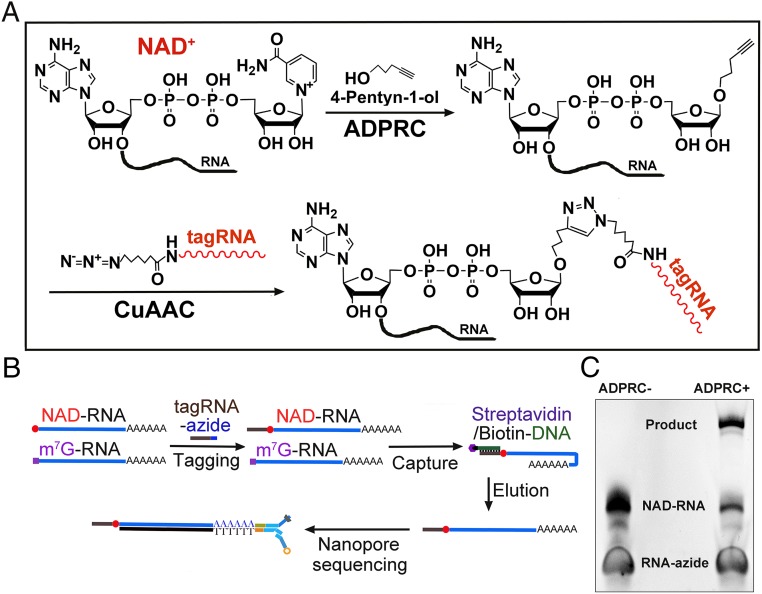Fig. 2.
The NAD tagSeq method. (A) Diagram illustrating the reactions for tagging NAD-RNA with a synthetic RNA. In the presence of ADPRC, the alkyne (4-pentyn-1-ol) replaces the nicotinamide of NAD-RNA, resulting in NAD-RNA being functionalized with an alkyne group. In the second step, through the CuAAC reaction, the alkyne-functionalized NAD-RNA is ligated to a synthetic RNA (tagRNA) with an azide group at its 3′ end. (B) Workflow for identification of NAD-RNAs from poly(A)-containing RNAs. Poly(A)-enriched RNAs are tagged with the tagRNA through the reactions shown in A. Tagged NAD-RNAs are enriched by hybridization to the 5′ biotin-DNA probe attached to the streptavidin beads. The eluted RNAs are subjected to Oxford Nanopore library preparation and sequencing. (C) Tagging of a 38-nt NAD-RNA with a synthetic 25-nt RNA-azide. The NAD-RNAs were reacted with 4-pentyn-1-ol in the presence or absence of ADPRC and then with the RNA-azide through CuAAC, resulting in its ligation with the RNA tag. No such product was detected in the absence of ADPRC. The RNAs were resolved on a denaturing polyacrylamide gel.

